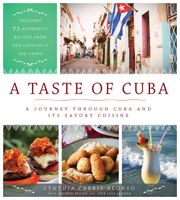As you drive west from Central Havana to Vedado, the buildings you pass become taller and more modern, though several notorious buildings maintain the baroque and neoclassical style of Old Havana. Vedado, whose name translates to “private reserve” or “forbidden,” was originally a forest reserve with a variety of trees protecting Havana city. Wood houses were first built in Vedado in the 1860s. In the beginning of the twentieth century, secluded and exclusive homes were constructed in the neighborhood. A wave of modern and architecturally innovative buildings and landmark hotels were built during the 1950s, when Havana was a chic destination for wealthy Americans. During this period of opulence and corruption, casinos were part of the lively scene, particularly the ones in the great dome of the Hotel Habana Riviera; the art deco, neoclassical-styled Hotel Nacional de Cuba (which hosted numerous well-known personalities such as film stars Frank Sinatra and Ava Gardner, scientist Alexander Fleming, and British Prime Minister Winston Churchill); the Hotel Capri; and the Habana Hilton (known then as the tallest and largest hotel in Latin America, with a Trader Vic’s restaurant, supper club, pool, and rooftop bar with city views). Following Fidel Castro’s entry into Havana on January 8, 1959, during the Cuban Revolution, the casinos were shut down and the Habana Hilton became Fidel Castro’s headquarters for three months while he also lived in one of the rooms. In 1960, after relations between Cuba and the United States soured, Castro renamed the notorious Habana Hilton hotel, designating it Habana Libre (Free Havana). At the nearby corner is the main avenue of Vedado, La Rampa (23rd Street), where Cubans come from far away and wait in long lines to eat the famous ice cream at Coppelia or see a movie at the Yara cinema. Vedado is a busy neighborhood with large residential buildings mixed with many of Cuba’s most prominent cultural venues, central government offices, embassies, and artist galleries. Vedado is also home to many of Havana’s trendiest restaurants, paladares, and nightclubs, such as the exhilarating Fábrica de Arte Cubano (FAC), where both Cubans and foreigners enjoy multimedia art presentations that change frequently.


